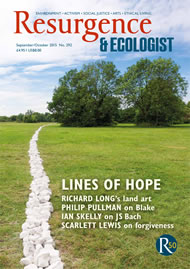Dan Fagin spent seven years investigating and writing the tale that is Toms River, and its Pulitzer Prize and more than 500 pages are a suitably epic testimony to those who fought for decades to bring justice to their town.
Beginning in the 1950s and lasting over 30 years, Toms River, an otherwise insignificant town in the state of New Jersey, became the dumping ground for toxic waste produced by Ciba-Geigy and Union Carbide. Cocktails comprising hundreds of chemicals seeped into the drinking water, and as time wore on the community saw a rise in rare forms of childhood cancer far in excess of the national average. For the parents, the link was clear between their community’s industrial legacy and their sick and dying children, but emotion has no place in law, and the effort to prove that the cancer cluster was more than a coincidence would haunt the town for decades.
Running alongside this story, Fagin chronicles the history of cancer research, from physicians in the 1850s who first observed a correlation between tumours and certain professions – chimney sweeps and dye workers – up to the birth of molecular epidemiology and the unravelling of our genetic code. Yet whilst treatment has seen recent breakthroughs, there is still much to learn about causation. It is that lack of understanding, combined with the burden of proof being upon the victim, that makes it so hard to prove that a specific exposure led to cancer, and so hard to pursue corporations through the courts.
As much as the book is a catalogue of corporate neglect, it is also a tale of individual activism. Of Don Bennett, the local journalist who first broke the story of the waste dumping; of Linda Gillick and other parents, who refused nothing less than a complete investigation; of Barry Finette, the scientist who continued to scour the blood of afflicted children through his microscope for years in search of clues, long after he had been told to let it drop. It hammers home that change comes from an initial feeling in the gut, and from those people who refuse to be told to keep calm and carry on.
The book is long, and many will find its laborious attention to detail frustrating. It is a story that could be condensed to a few pages, and indeed it often has been. But when, in an era of clickable, BuzzFeed journalism, only the sexy moments make the headlines – the scientific breakthroughs, the acts of civil disobedience – there is value in highlighting the drudgery behind the scenes, the years of lab experiments and meetings, the politics and bureaucracy, and in documenting the slow but inexorable movements that really make for change.
It is a credit to Fagin’s measured stance that Toms River can be read in many ways. There are notes of hope in how far we have come since, just a few decades ago, the common practice was to discharge all industrial waste into the nearest river. Yet many factories have moved abroad as Western countries tighten regulations, and many chemicals have still not been researched. Toms River is not an isolated community, but a microcosm of a global problem still scarcely understood. “The sins of one generation”, Fagin quotes one scientist as saying, “[will] be visited on the next through genetic mutation and cancer.” That legacy stands to continue, it seems, for as long as corporate greed wins out over regulation and those who push for it.






